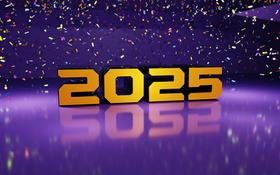For the 2025-26 school year, there are 6 public schools serving 3,059 students in Marshfield, MO (there are 2 private schools, serving 86 private students). 97% of all K-12 students in Marshfield, MO are educated in public schools (compared to the MO state average of 88%).
The top ranked public schools in Marshfield, MO are Marshfield High School, Daniel Webster Elementary School and Marshfield Jr. High School. Overall testing rank is based on a school's combined math and reading proficiency test score ranking.
Marshfield, MO public schools have an average math proficiency score of 43% (versus the Missouri public school average of 40%), and reading proficiency score of 45% (versus the 43% statewide average). Schools in Marshfield have an average ranking of 7/10, which is in the top 50% of Missouri public schools.
Minority enrollment is 11% of the student body (majority Hispanic), which is less than the Missouri public school average of 32% (majority Black).
Best Public Schools in Marshfield, MO (2025-26)
School
(Math and Reading Proficiency)
(Math and Reading Proficiency)
Location
Quick Facts
Rank: #11.
Marshfield High School
(Math: 42% | Reading: 54%)
Rank:
Rank:
7/
Top 50%10
370 State Hwy Dd
Marshfield, MO 65706
(417) 859-2120
Marshfield, MO 65706
(417) 859-2120
Gr: 9-12 | 896 students Student-teacher ratio: 14:1 Minority enrollment: 11%
Rank: #22.
Daniel Webster Elementary School
(Math: 41% | Reading: 50%)
Rank:
Rank:
7/
Top 50%10
650 N Locust St
Marshfield, MO 65706
(417) 859-2120
Marshfield, MO 65706
(417) 859-2120
Gr: 2-3 | 470 students Student-teacher ratio: 13:1 Minority enrollment: 11%
Rank: #33.
Marshfield Jr. High School
(Math: 43% | Reading: 46%)
Rank:
Rank:
6/
Top 50%10
660 N Locust St
Marshfield, MO 65706
(417) 859-2120
Marshfield, MO 65706
(417) 859-2120
Gr: 6-8 | 660 students Student-teacher ratio: 14:1 Minority enrollment: 12%
Rank: #44.
Shook Elementary School
(Math: 46% | Reading: 37%)
Rank:
Rank:
6/
Top 50%10
180 State Hwy Dd
Marshfield, MO 65706
(417) 859-2120
Marshfield, MO 65706
(417) 859-2120
Gr: 4-5 | 456 students Student-teacher ratio: 14:1 Minority enrollment: 11%
Rank: n/an/a
600 N Locust St
Marshfield, MO 65706
(417) 859-2120
Marshfield, MO 65706
(417) 859-2120
Gr: K-1 | 407 students Student-teacher ratio: 12:1 Minority enrollment: 12%
Rank: n/an/a
520 N Locust
Marshfield, MO 65706
(417) 859-2120
Marshfield, MO 65706
(417) 859-2120
Gr: PK | 170 students Student-teacher ratio: 24:1 Minority enrollment: 11%
Marshfield, Missouri Public Schools (Closed)
School
Location
Quick Facts
Sunrise (Closed 2023)
Special Education School
232 South Elm Street
Marshfield, MO 65706
(417) 859-3439
Marshfield, MO 65706
(417) 859-3439
Gr: Inquire with school | 6 students Student-teacher ratio: 6:1 Minority enrollment: 17%
232 S Elm St
Marshfield, MO 65706
(417) 859-3439
Marshfield, MO 65706
(417) 859-3439
Gr: K-12 | 4 students Student-teacher ratio: 4:1
Frequently Asked Questions
What are the top ranked public schools in Marshfield, MO?
The top ranked public schools in Marshfield, MO include Marshfield High School, Daniel Webster Elementary School and Marshfield Jr. High School.
How many public schools are located in Marshfield?
6 public schools are located in Marshfield.
What percentage of students in Marshfield go to public school?
97% of all K-12 students in Marshfield are educated in public schools (compared to the MO state average of 88%).
What is the racial composition of students in Marshfield?
Marshfield public schools minority enrollment is 11% of the student body (majority Hispanic), which is less than the Missouri public schools average of 32% (majority Black).
Which public schools in Marshfield are often viewed compared to one another?
Popular comparisons of public schools in Marshfield include: Daniel Webster Elementary School vs. Edwin P. Hubble Elementary School
Recent Articles

Texas Schools Enrollment Trends & Policy in 2025
Latest data and policy changes on Texas public school enrollment growth, funding, and virtual education in 2025.

Financial Aid & Hidden Costs in Public Schools
Learn about financial aid and hidden costs in public schools. Discover what parents should budget for beyond tuition-free education.

NYC Schools Still Most Segregated in 2025
Despite reforms, New York City schools remain the most segregated in the U.S. in 2025. Here’s what parents and educators need to know.
